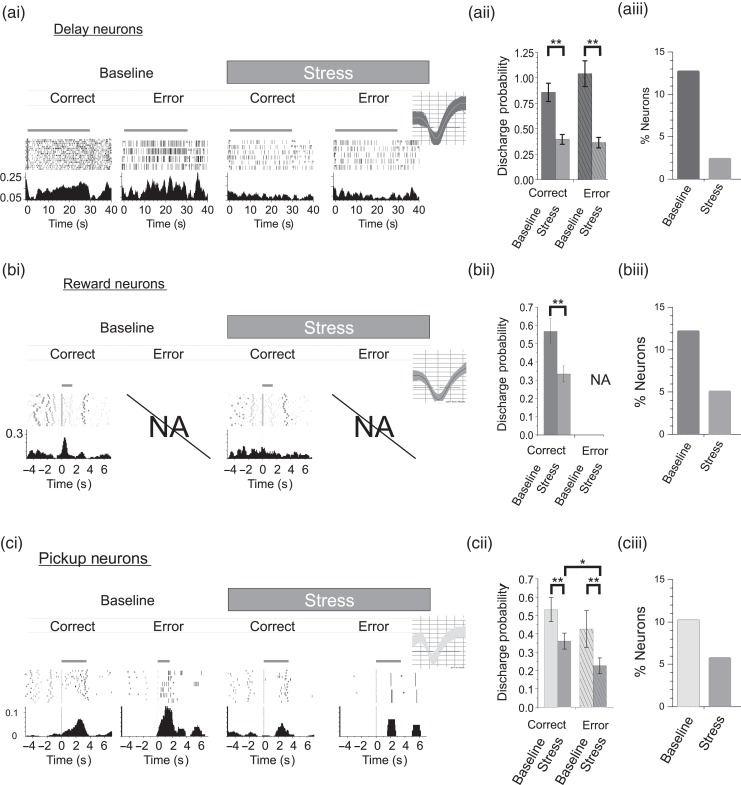Figure 2.
Stress suppresses task-related spiking activity of strongly tuned WS-neurons. (a) Stress suppresses delay-related activity of strongly tuned dmPFC neurons (n = 57). ai, Spike rasters and PETHs of a delay neuron during correct or error trials from baseline and stress conditions. X-axes = time (seconds) before and after start of delay, Y-axes = spike probability, gray bar = delay interval (Inset = spike waveforms). (aii) Mean delay-related activity for correct or error trials was suppressed by stress. Chance level of performance = 50% correct. (aiii) Stress reduced the size of the population of delay-tuned neurons. (b) Stress suppresses reward responses (n = 55). (bi) Rasters and PETHs of a reward-tuned neuron demonstrating a robust stress-related suppression of reward-related signaling. PETH X-axes are aligned to delivery of reward. (bii) Stress suppressed mean reward-related responses. (biii) Stress suppressed the population size of reward-tuned neurons. NA = reward was not given on error trials. (c) Stress suppressed pickup-related spiking (n = 46). Rasters and PETHs of a pickup-tuned neuron are aligned to initial touch by the experimenter. The absence of initial response to touching animal (ci 1st panel) indicates that pickup response is not sensory mediated. Under Baseline conditions, this neuron exhibited a greater pickup response after error trials, indicative of an error-related signal. (cii) Stress suppressed mean pickup-related responses for both correct and error trials. Error trials demonstrated the highest sensitivity to stress. (ciii) The population size of pickup-tuned neurons was reduced during stress. Left and right trial activity was combined for population analyses. Probabilities >1 indicate that on average the interval contained >1 spike/bin/trial. Bar graphs = mean ± SEM. *P< 0.05; **P< 0.001.

